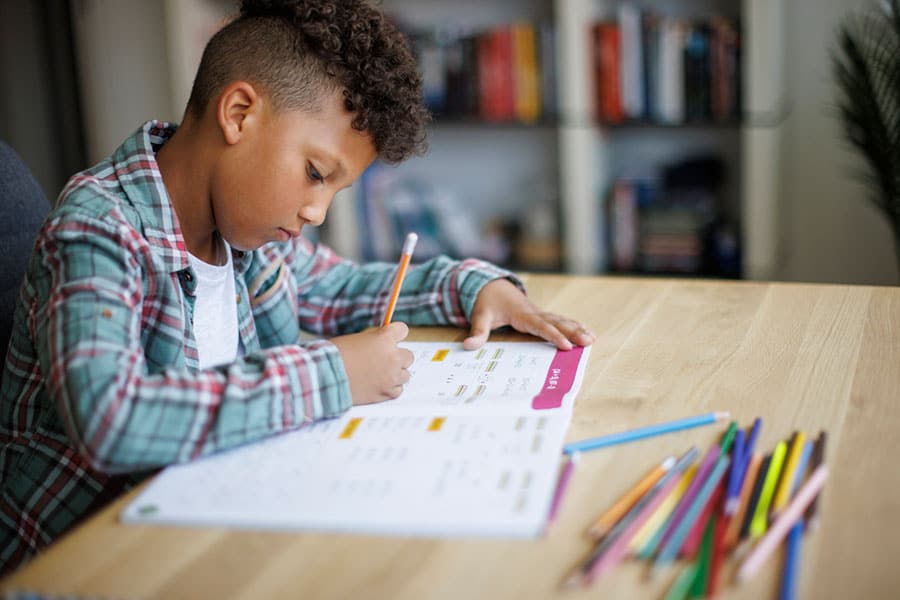Understand how dyslexia is identified and the testing methods involved
Dyslexia is a common learning disability affecting about 20 percent of the population. Representing up to 90 percent of people who have learning disabilities, it’s the most common of all neuro-cognitive disorders. Dyslexia affects the ability to read, write, and spell, and is not an indication of a lack of intelligence. Rather, it is a neurological condition that makes it challenging for individuals to process written and spoken language.
Early identification and diagnosis for dyslexia are both key to ensuring customized interventions and treatments leading to the academic success of the individual. Today we will talk about how dyslexia is identified, and the various testing methods used.
Dyslexia: Defined
Dyslexia is a learning disability that manifests as difficulty with accurate or fluent word recognition. Oftentimes, it also involves poor spelling and decoding abilities. Affecting both children and adults, this condition is commonly identified in childhood. Scientists don’t fully understand the precise cause, but research suggests it is due to differences in brain structure and function, particularly in areas that are responsible for language processing.
Identifying dyslexia early will ensure the child gets the support and interventions they need. In school-age children, signs of dyslexia may include:
- Difficulty sounding out words
- Difficulty decoding words while reading
- Problems with spelling (oral and written tasks)
- Confusion of letters that look similar (“b” and “d” or “p” and “q”)
- Difficulty with reading fluency and comprehension, especially when under time constraints
- Avoidance of reading tasks and frustration with learning to read
As a parent, if you detect these challenges, it’s wise to seek a formal evaluation to determine for certain if dyslexia is present.
Testing Process for Dyslexia
There is no single test that is able to diagnose dyslexia. Many factors are considered during the process, such as:
- Your child’s development, educational issues, medical history, and any conditions that run in the family, including dyslexia or other types of learning disabilities, says the Mayo Clinic.
- Questionnaires or tests to identify reading and language abilities.
- Vision, hearing and neurological tests to determine whether another disorder may be causing or augmenting the reading difficulty.
- Psychological evaluation to determine whether social problems, depression, or anxiety could be limiting abilities.
- Educational tests for reading and other academic skills.
Dyslexia testing involves a comprehensive set of assessments performed by trained professionals such as licensed psychologists, educational specialists, and speech-language pathologists. There are typically many steps involved, and those may vary depending on the severity of symptoms and the age of the individual.
Steps Involved in Testing
From an initial screening to observations, here’s a look at the general steps involved in testing for dyslexia.
Initial Screening
A screening by a teacher, pediatrician, or educational specialist is the first step whereby the child’s reading and language skills will be observed. Informal assessments such as reading fluency tests or questionnaires about developmental history and educational performance can give the first clue as to whether signs of dyslexia are evident. Depending on those results, further evaluation may be recommended.
Comprehensive Evaluation
A comprehensive evaluation with a licensed psychologist involves numerous standardized tests to assess reading and language processing. This evaluation may include:
- Reading Assessments
- Phonological Awareness Testing
- Spelling Tests
- Decoding and Encoding Tests
- Rapid Naming Tasks
- Cognitive Assessments
Clinical Interviews
Clinicians will also conduct interviews with parents, teachers, and the child to gather information about developmental history, academic performance, and family history. This will help professionals distinguish dyslexia from other learning issues.
Observations
Teachers and parents can offer detailed observations of the child’s behavior regarding how they approach reading and language tasks.
What to Expect After Diagnosis
Once a dyslexia diagnosis is made, a plan for more targeted interventions and support can be created. Interventions include:
- Specialized reading programs that utilize multi-sensory methods involving auditory, visual, and kinesthetic cues to reinforce learning.
- Speech and language therapy focusing on phonological processing and language comprehension.
- Accommodations such as extra time on tests, audio books, or alternative reading formats.
In the end,dyslexia testing is important in understanding the unique learning needs of the individual so that the appropriate interventions can be recommended.
Contact CNLD Neuropsychology
To schedule a consultation for dyslexia testing in Ann Arbor MI, please contact us at (734) 994-9466. We are located at 5864 Interface Dr., Suite D, in Ann Arbor for your convenience.


